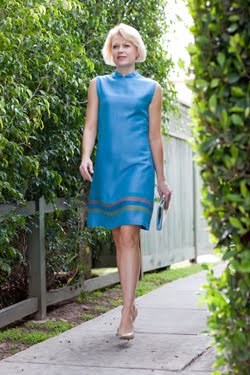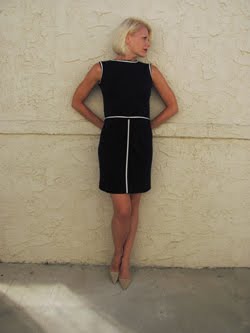With Gordon by his side, Woody transitioned from his "early funny films"--such as Bananas and Sleeper--into the dramatic comedy of Annie Hall. This was a "major turning point" in his career. Though he had been a success since his late teens, there had always been much more to Woody than just jokes....he pondered philosophy, theology, and existentialism even as a child. The earliest scripts for Annie Hall had a rather somber and introspective mood...similar to Interiors, but from his perspective rather than the three sisters. Then there was a script that was very much like Manhattan Murder Mystery, which he would go on to make years later. Clearly, the early incarnations of Annie Hall were very different from the final film we love today. And in both cases, the character of Annie was but briefly included...almost in the background. Needless to say, things were rewritten and reshot--multiple times over a lengthy 10 month period--and the production was wrought with challenges and changes galore. Though all the writing, acting, and directing had been great, genius truly emerged during the editing process...finally bringing the character of Annie Hall to the fore and finding that the best story surrounded she and Alvy Singer falling in (and out) of love. It's no wonder entire books have been written on all that took place to make the movie that is now the gold standard for romantic comedies.
One of the reasons for its perfection is unquestionably the presence of Diane Keaton. It was her style with the backdrop of an idealized intellectual New York City that mesmerized me. Woody loves to deny the autobiographical nature of Annie Hall, but there are many details that happen to be true. At the top of a long list is the fact that Diane's real name is Annie Hall ("Annie" was her nickname). And her family may be from Los Angeles instead of Chippewa Falls, but they are still similar to their depiction at the dinner table in the movie...right down to Grammy Hall. The overall character of Annie is also so close to Keaton's own... the naturally bubbly and slightly goofy beauty who exhibits such an otherworldly sense of style that mere mortals can only call it genius.
Make no mistake...though the character may be Annie Hall, the style is pure Diane Keaton. The clothes that became costumes for the movie came straight from her own closet. The style is so authentically her own that she continues to dress this way to this day. But interestingly, the movie's Costume Designer Ruth Morley often gets credit for the groundbreaking style, including by other well respected designers and scholars like Deborah Nadoolman Landis in her book Dressed. But I must tell you, I have a really hard time believing it, especially when I've heard how strongly she reportedly disapproved of Diane's clothing choices. In fact, Woody remembered a conversation during a 1995 interview:
[Morley] said, '"Tell her not to wear that. She can't wear that. It's so crazy."
And I said, "Leave her. She's a genius. Let's just leave her alone, let her wear what she wants.'"What we have here is a simply a case of two geniuses in style--Keaton and Morley. I mean, Ruth did everything from Tootsie to Taxi Driver. She orchestrated the whole wardrobe for Annie Hall; beyond just the lead actress' look, the entire movie's style is iconic. The images of Annie and Alvy together are some of the most gorgeous in film. The colors were rich, the patterns varied, and everyone coordinated so well together. With this film, Morley made major contributions in Men's Style as well. She made classic East Coast almost preppy pieces that work on just about everyone. Though the Men's Style gets overshadowed in this picture by Diane's, it is nonetheless influential on its own. On this note, Morley had an incredible eye and brought in yet another genius in style...an up-and-coming talent named Ralph Lauren. He had started his own label ten years earlier with a collection of ties at Brooks Brothers (yes, the ones on Annie Hall are from RL). We all now know his signature style, and there's no question he gave and got so much from this experience on Annie Hall.
When Annie Hall hit the movie theaters in 1977, it was a seismic shift in fashion as well as film. It was a revolution...from the runways to the street. Diane's reference points were inspired--everywhere from the menswear of both the 1920s and 1940s to the bohemian feel of the 1960s and 1970s. She simultaneously drew from the past while also being ahead of the trend; she showed what the future would bring. With every look, Diane taught us the importance of accessories like hats, scarves, and gloves (though gloves do not appear in Annie Hall) and she regularly wore every single one with an outfit. I believe it was Coco Chanel's edict to remove one item of an outfit before heading out the door, but Diane did not subscribe to this. She taught us how to effectively layer a look, and you'll see how many of the ones from Annie Hall are right on trend today. Countless designers (Jenna Lyons at J. Crew), stylists (Rachel Zoe), models (Kate Moss), and celebrities (Rachel Bilson) continue to draw inspiration from her style. Diane may have won the Best Actress Oscar for Annie Hall, but she definitely deserves an award for her iconic style. Seems like old times indeed.
We meet Alvy Singer in a red plaid shirt (over a brown t-shirt) with a brown checked blazer,
who leads us into his latest disagreement with his girlfriend, Annie Hall
who leads us into his latest disagreement with his girlfriend, Annie Hall
Now we are introduced to Annie Hall and her style--
wearing a sundress over a black turtleneck and pairs it with a scarf, a surprisingly on trend look
We learn that Alvy first met Annie playing tennis and liked her right away
The iconic outfit of Annie Hall--menswear with a modern touch--
white buttondown, Ralph Lauren tie, black vest, and khakis are accessorized with a black hat and her favorite woven bag
Alvy compliments Annie on her style...
his own fantastic all white look is the result of Ruth Morley (and likely Ralph Lauren)
his own fantastic all white look is the result of Ruth Morley (and likely Ralph Lauren)
One of Woody's groundbreaking filming techniques was to add actual subtitles to their
first conversation to show the difference between what men and women feel and what they say
first conversation to show the difference between what men and women feel and what they say
Shopping at the bookstore in another very modern outfit--plaid shirt, black blazer, olive pants--
that you could imagine today's fashionistas like Rachel Bilson dying to wear
While taking classes, Annie chooses a rose-colored tankdress
with a scarf belt and her woven bag again
with a scarf belt and her woven bag again
More groundbreaking comedy--Alvy's search for answers includes a chat with Shelly Hack (above)
and in the cartoon world of Walt Disney's Wicked Witch
Their brief breakup comes to an end when Alvy saves Annie from a rather large spider...
hard to resist how cute she is in her basic gray crewneck t-shirt and olive khakis
Woody's own look is classic--belted denim paired with a sky blue cotton shirt over a T rolled up to the elbows
Ensembles show the genius of Ruth Morley...look at how well all of the modern style coordinates together
while it also works in the larger image with the period costumes on characters in flashback
Again, Diane is the master of layering and repurposing pieces--she chooses a black spaghetti tank over the gray t-shirt, the khakis rolled up at the bottom, and black coat for her birthday with the guys
Hitting her stride as a singer, Annie shines in the spotlight with "Seems Like Old Times"
Interest in her as a singer from an LA music producer (Paul Simon) starts to cause a rift in their relationship
Alvy and Annie go out to visit Los Angeles
Woody Allen's famously poor opinion of LA is reflected in what landmarks he chooses--
Larry Flynt's Hustler building on Wilshire (above), Tail of the Pup (below), and...
...television (especially with laugh tracks)
Everyone is dressed in lighter-colored clothing for LA, including one of Annie's "suits"
Decidedly gloomy colors to fit the mood when Annie and Alvy realize their "relationship is like a dead shark"...
they break up once and for all and Annie heads back to LA for good
Sunset Plaza in West Hollywood, where all the beautiful people continue to meet today,
is where Annie meets Alvie in her bright breezy California wardrobe
Finally, meeting years later, we say goodbye to Annie in this modern outfit--
plaid shirt over a black turtleneck, denim rolled up at the bottom, and boots
plaid shirt over a black turtleneck, denim rolled up at the bottom, and boots



































































































































1 comment:
I didn't realize the clothes that Keaton wore were her own! Really interesting post.
Post a Comment